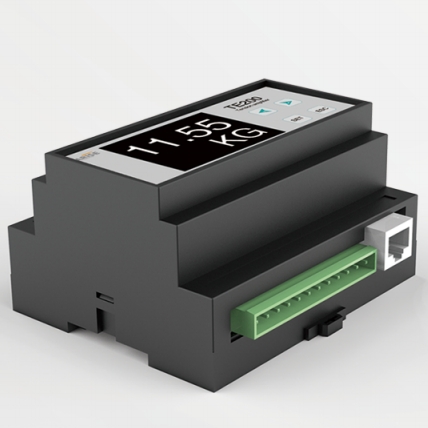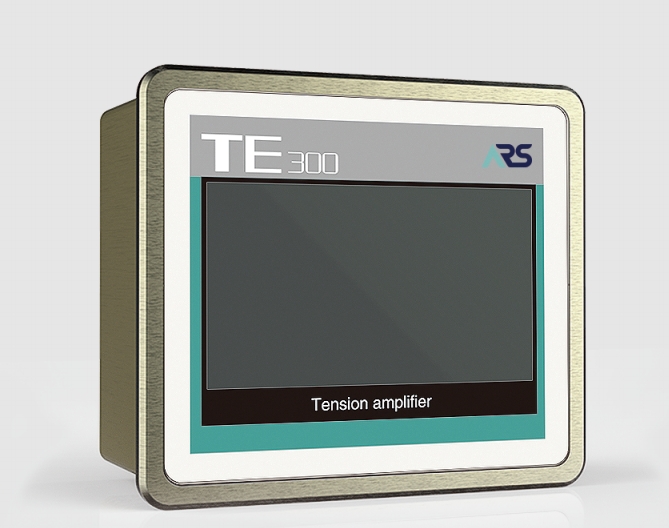Harnessing Precision: A Comprehensive Guide to High-frequency Tension Amplifiers
In engineering and precision instrumentation, advancements in amplifier technology have led to the development of high-frequency tension amplifiers. They are sophisticated electronic devices designed to accurately measure and amplify small mechanical vibrations or tension variations occurring at high frequencies. These specialized tension amplifiers play a crucial role in various industries and research fields where precise measurement and analysis of dynamic mechanical properties are essential.

Understanding High-frequency Tension Amplifiers
High-frequency tension amplifiers are sophisticated electronic devices designed to accurately measure and amplify small mechanical vibrations or tension variations occurring at high frequencies. These amplifiers typically operate in the kilohertz (kHz) to megahertz (MHz) frequency range, allowing for precise detection and amplification of dynamic tension signals in real-time. By amplifying these signals, tension amplifiers enable engineers and researchers to monitor and analyze mechanical properties, vibrations, and dynamic responses in various materials and structures.

Principles of Operation in High-frequency Tension Amplifiers
At the heart of high-frequency tension amplifiers lie precision electronic circuits optimized for amplifying high-frequency signals while maintaining low noise and distortion levels. These circuits leverage advanced semiconductor technologies, such as field-effect transistors (FETs) and operational amplifiers (op-amps), to achieve high gain and bandwidth characteristics required for accurate signal amplification. Additionally, specialized filtering and signal conditioning techniques are employed to isolate and amplify specific frequency components of interest, enhancing signal fidelity and resolution.
Key Features and Capabilities of High-frequency Tension Amplifiers
1. Signal Detection
High-frequency tension amplifiers begin their operation by detecting mechanical vibrations or tension variations using specialized sensors. These sensors, such as strain gauges, piezoelectric transducers, or accelerometers, convert mechanical changes into electrical signals. For example, strain gauges change their electrical resistance in response to mechanical strain, while piezoelectric transducers generate electrical charge proportional to mechanical stress.
2. Amplification
Once the electrical signals representing mechanical variations are detected, they are passed on to the amplifier circuitry. High-frequency tension amplifiers are designed to provide high gain, meaning they can significantly increase the magnitude of the electrical signals while preserving their frequency content. This amplification process is crucial, as the mechanical variations being measured are often small and may be masked by noise.
3. Bandwidth
A critical aspect of high-frequency tension amplifiers is their bandwidth, which refers to the range of frequencies over which the amplifier can effectively amplify signals. These amplifiers are optimized to operate within specific frequency ranges, typically spanning from kilohertz (kHz) to megahertz (MHz) frequencies. The high bandwidth allows the amplifier to accurately capture and amplify fast-changing mechanical vibrations or tension variations.
4. Filtering
High-frequency tension amplifiers may incorporate filtering techniques to isolate specific frequency components within the signals of interest. Adjustable filters within the amplifier circuitry enable users to focus on particular frequency ranges relevant to their application. Filtering helps in eliminating unwanted noise and interference, enhancing the signal-to-noise ratio and improving the accuracy of measurements.
5. Low Noise and Distortion
Advanced noise reduction techniques are employed in high-frequency tension amplifiers to minimize unwanted noise and distortion in the amplified signals. This is essential for ensuring the fidelity of the measurements, particularly when detecting subtle mechanical vibrations or tension variations. Low noise and distortion levels preserve the integrity of the signals, allowing for precise analysis and interpretation.
6. Real-Time Monitoring and Visualization
Many high-frequency tension amplifiers are equipped with real-time monitoring and visualization capabilities. This allows engineers and researchers to observe the amplified signals in real-time, enabling them to assess dynamic responses, identify anomalies, and make informed decisions during testing and analysis.
Applications of High-frequency Tension Amplifiers
1. Structural Health Monitoring (SHM)
- High-frequency tension amplifiers are used in SHM systems to monitor the structural integrity of buildings, bridges, dams, and other civil infrastructure.
- These amplifiers detect and analyze mechanical vibrations and tension variations to assess the health and performance of structures, identify defects or damage, and predict potential failures.
2. Materials Testing and Characterization
- In materials science and engineering laboratories, high-frequency tension amplifiers are utilized for mechanical testing and characterization of materials.
- These amplifiers enable researchers to measure mechanical properties such as tensile strength, elasticity, damping characteristics, and fatigue behavior of materials subjected to dynamic loading conditions.
3. Acoustic Emission Testing (AET)
- High-frequency tension amplifiers play a crucial role in AET, a non-destructive testing technique used to detect and analyze acoustic signals generated by materials undergoing deformation or damage.
- These amplifiers amplify the acoustic emission signals, allowing for the detection and localization of defects, cracks, and other anomalies in materials and structures.
4. Vibration Analysis and Monitoring
- High-frequency tension amplifiers are employed for vibration analysis and monitoring in various industries, including aerospace, automotive, and manufacturing.
- These amplifiers detect and analyze mechanical vibrations in machinery, equipment, and components to assess their condition, identify faults or wear, and optimize maintenance and operational performance.
5. Ultrasonic Testing (UT)
- In ultrasonic testing applications, high-frequency tension amplifiers are used to amplify ultrasonic signals transmitted through materials for defect detection and characterization.
- These amplifiers enhance the sensitivity and resolution of ultrasonic measurements, enabling the detection of internal defects, cracks, and discontinuities in materials such as metals, composites, and ceramics.
6. Research and Development
- High-frequency tension amplifiers play a vital role in research and development activities across various disciplines, including materials science, mechanical engineering, and physics.
- Researchers use these amplifiers to investigate dynamic mechanical behavior, resonant frequencies, and vibration modes of materials and structures, leading to advancements in material design, manufacturing processes, and structural optimization.
7. Automotive and Aerospace Testing
- In automotive and aerospace industries, high-frequency tension amplifiers are employed for dynamic testing of components, assemblies, and structures.
- These amplifiers help assess structural integrity, fatigue life, and vibration characteristics of automotive chassis, aircraft wings, engine mounts, and other critical components, ensuring safety, reliability, and performance.
Conclusion
High-frequency tension amplifiers play a crucial role in enabling precise measurement and analysis of dynamic mechanical properties in a wide range of applications. With their advanced features and capabilities, these specialized amplifiers empower engineers, researchers, and technicians to unravel the complexities of mechanical behavior in materials and structures, driving innovation and advancements across diverse industries and research disciplines.

